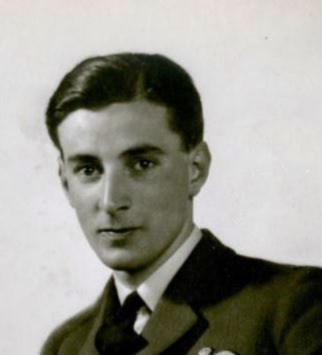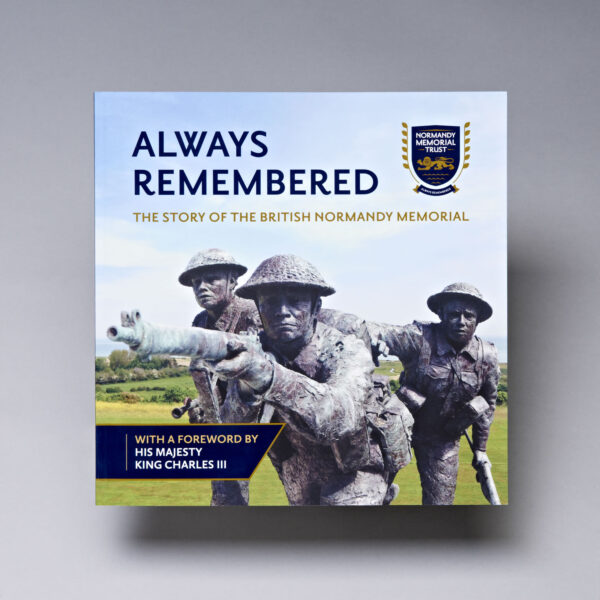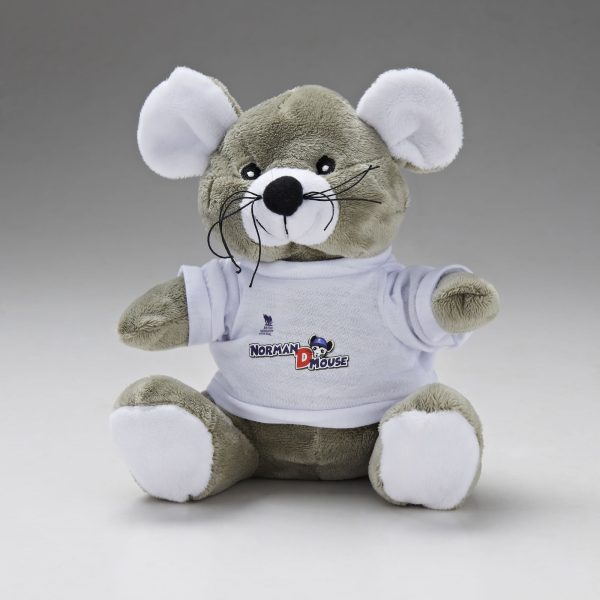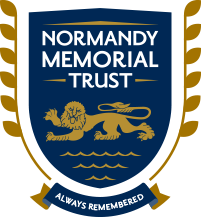
Edmund Henry Jeffreys
This story is shared by the Trust with kind permission from John Hamblin, Researcher.
Edmund Henry Jeffreys, Flight Lieutenant 116717 DFC, 248 Squadron, Royal Air Force. Killed in action on the 10 th of June 1944, aged 22.
Edmund Henry Jeffreys was born in South London on the 22nd of December 1921, the younger son of Captain Robin Edmund Jeffreys DSC RN and Marjorie Ellenwood Jeffreys (née Hobbs) of 1 Bassett Crescent West in Southampton. He was educated at St Michael’s School, Uckfield from 1931 to July 1935 and at Radley College where he was in Mr Cock’s House from September 1935 to December 1938 where he represented the college in the mile at the age of 16 and showed promise in cricket and football. On leaving school he studied for entrance to the Royal Navy and was bitterly disappointed when he was unsuccessful. Instead, he went to work for the British Power Boat Company
He entered the Royal Air Force Volunteer Reserve in 1941 and rose to the rank of Leading Aircraftsman before being commissioned as a Pilot Officer on the 24th of January 1942. On completion of his training he was posted to 236 Squadron operating Beaufighter aircraft in September 1942 based at RAF Wick in Scotland. He was promoted to Flying Officer on the 1st of October 1942.
In January 1943 Edmund Jeffreys and his navigator Flying Officer Robert Augustine Irving, set off from Wick in search of the German battleship "Scharnhorst". The ship had been reported as having slipped out of Kiel and to be heading north. In appalling weather conditions, they spotted the vessel which, when discovered, turned back to head for home waters.
For this action both men were awarded the Distinguished Flying Cross which was announced in the London Gazette of the 16th of February 1943. The citation read: -
"In January 1943, Flying Officers Jeffreys and Irving were pilot and navigator respectively of an aircraft engaged on a shipping reconnaissance over enemy waters. In spite of adverse weather, success was achieved, and valuable information obtained. Throughout the flight both these officers displayed great skill and determination. On a further 2 sorties later in the month they displayed great fortitude and devotion to duty."
In the spring of 1943 Edmund Jeffries was transferred to 248 Squadron, who by D-Day were operating “Tsetse” Mosquitos. These were aircraft which fired armour piercing cannon and provided an escort on anti-shipping patrols in the Bay of Biscay. They were based at RAF Talbenny in Pembrokeshire. He was promoted to Flight Lieutenant on the 25th of January 1944.
On the 10th of March 1944 he and three other aircraft from the squadron, took off from RAF Portreath in a Mosquito Mk IV for a special patrol. Visibility was 8-10 miles below the cloud base. At noon, they spotted an enemy formation of eight to ten JU 88s which were protecting an enemy naval force at an altitude of 2,000 feet. Two of the enemy aircraft were night fighters as they were painted black. The Mosquitos engaged the Ju88s during which Edmund Jeffreys fired around 200 rounds of 20mm ammunition and damaged an enemy aircraft. On his return to base he filed the following combat report:-
“At 09.24, aircraft U/248 with R, Y and Z in formation as AA escort, and E/L of 248 Squadron (Special Detachment) sighted six Ju88s in line astern at 2,000 ft., circling enemy convoy. “U” then climbed up to base of broken cloud at 2,500 ft. with R, Y and Z and became detached from formation. ” U” formated on E/L 248 (Special Detachment and circled with “E” and “L” which made two attacks on target, while “U” climbed to 3,000 ft. Pilot then saw one Ju88 burning on the sea, and the starboard D.R of the last two turned round in an effort to pick up survivors, but regained former position as Ju88 burnt itself out on the water. Sighted one Ju88 ahead emerging from cloud. “U” made head on attack closing to 30 ft. The E/A pulled over and passed “U” to port, and was seen to emitting smoke. No return fire was experienced, and pilot was unable to avoid entering cloud and so lost visual contact. “U” then turned sharply to port, and on breaking cloud was attacked from very close range astern by another Ju88, using tracer which went to starboard, and later by a further 88 from a greater range also using tracer. ”U” took immediate evasive action and entered cloud, and attempted to regain contact with formation by V.H.F. Thick cloud prevented “U” from regaining proximity of convoy, and though contact was ultimately achieved no Mosquitos were seen. The Liberators however were sighted 3 miles distant and south of the convoy, and “U” weaved in behind them, then diving down ahead of them alongside the convoy at 3,000 ft. to 0 ft. at 360 m.p.h. Attempts were made to take photograph but camera jammed, and “U” turned away as Flak which was “hosepiped” and short, was being experienced from D.R.s. At this moment both Liberators followed “U” in to attack, the D.R.s opened fire with heavy and light flak. Pilot then s/o for base.”
On D-Day, the 6th of June 1944, 248 Squadron flew five anti-shipping sorties off Normandy, Brittany and off the coast of the Bay of Biscay. On the 10th of June 1944 he was to fly his last sorties. He took off from RAF Portreath in Mosquito FB Mk VI HR117 for an anti-shipping sortie off the French coast. They and three other aircraft from their squadron attacked the U-boat U-821 near Ushant. The attack was so ferocious that the crew abandoned ship and the abandoned submarine was sunk by a Liberator of 206 Squadron. That afternoon the squadron was called upon to undertake a follow up mission during which Edmund Jeffreys and his navigator Flying Officer Dudley Albert Burden were shot down by a motor launch which was carrying the survivors of U-821. Their aircraft crashed at Ushant. The motor launch was promptly sunk by other members of his squadron, with the loss of 50 lives.
A memorial service was held for him on the 22nd of July 1944 at the Chapel of the Royal Hospital in Chelsea. There is also a memorial to the two men near to the crash site.
A Times correspondent wrote: -
“Edmund Jeffreys was one of those many young Englishmen whose lives have found expression in the air. He loved the beauty of nature, and flying gave him his fill of what he loved. His letters always told of the wonders which flying brought into the range of his understanding. Even in his days of relaxation he sought the high hills of Scotland and Wales, the better to enjoy what nature had to offer. He seldom spoke of his fighting experiences, although there were many - one of which brought him the DFC. The last months of his life were clouded by the death in action of his elder brother, for love of family ranked with him even higher than love of nature. That cloud has been lifted from him; and England lacks another gallant fighter pilot.”
Edmund's brother, Lieutenant John Darell Jeffreys, No. 2 Commando, was killed in action in Sicily on the 16th of August 1943.
Edmund left a bequest of 50 books on mountaineering for the Radley College library. The Radley College magazine wrote: - "Although Edmund Jeffreys did not stay long enough to achieve greatness at school, yet he was no nonentity: his contemporaries will recall, for instance, that he ran the mile for the School while he was still quite young. He had attractive qualities, and those who were privileged to know him well will remember particularly his interest in and love of nature, and subject on which he could also write happily."
Edmund Jeffreys is commemorated on the Runnymede Memorial Panel 202 and he is commemorated in the roll of honour at the Church of the Beheading of St John the Baptist at Doggington in Kent and on the war memorial at Radley College. He is also commemorated on the war memorial at St Michael’s School, Tawstock.
FALLEN HEROES
EDMUND HENRY JEFFREYS
Royal Air Force • FLIGHT LIEUTENANT
Royal Air Force Volunteer Reserve
248 Squadron, Royal Air ForceDIED | 10 June 1944
AGE |
SERVICE NO. | 116717
FALLEN HEROES
EDMUND HENRY JEFFREYS
Royal Air Force • FLIGHT LIEUTENANT
Royal Air Force Volunteer Reserve
248 Squadron, Royal Air ForceDIED | 10 June 1944
AGE |
SERVICE NO. | 116717







